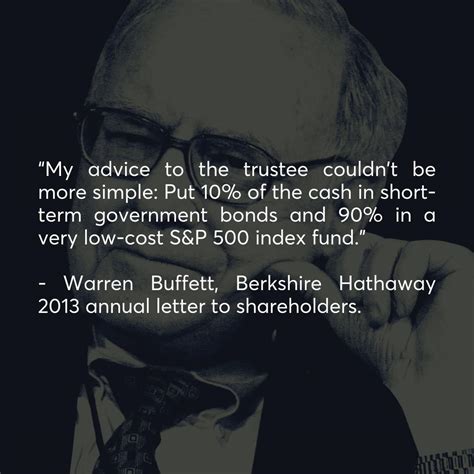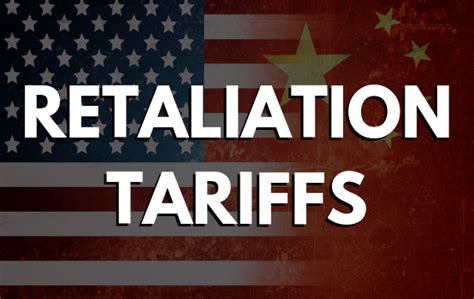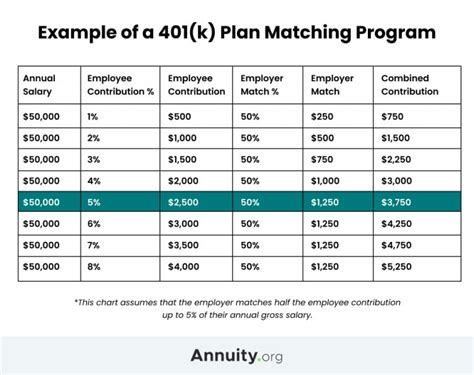
Investing $1,000 in a Vanguard S&P 500 ETF (VOO) could potentially yield significant returns over the long term, according to Warren Buffett’s endorsement of index fund investing as a cornerstone of a sound investment strategy. Buffett’s consistent advocacy for low-cost index funds, particularly those offered by Vanguard, underscores the potential for ordinary investors to achieve substantial wealth accumulation through patient, long-term investment in the broader market.
Warren Buffett, the chairman and CEO of Berkshire Hathaway, has long championed the benefits of investing in low-cost S&P 500 index funds, frequently recommending Vanguard’s offerings as a prime example. His investment philosophy emphasizes the importance of diversification, minimal fees, and a long-term horizon, making index funds an ideal vehicle for both novice and seasoned investors. Buffett’s endorsement is not just theoretical; he has explicitly instructed the trustee of his estate to invest 90% of his wife’s inheritance in a low-cost S&P 500 index fund, with the remaining 10% in short-term government bonds. This allocation strategy underscores his confidence in the long-term performance and stability of the S&P 500.
Buffett’s rationale for favoring index funds over actively managed funds stems from several key factors. Firstly, the consistently lower expense ratios of index funds provide a significant advantage over time. Actively managed funds typically charge higher fees to cover the costs of research, trading, and portfolio management. These fees can erode returns, especially over extended periods. “By periodically investing in an index fund, the know-nothing investor can actually outperform most investment professionals,” Buffett stated in a 1996 letter to Berkshire Hathaway shareholders, highlighting the simplicity and effectiveness of index fund investing.
Secondly, the diversification inherent in S&P 500 index funds reduces risk. By investing in a broad basket of 500 of the largest publicly traded companies in the United States, investors gain exposure to a wide range of industries and sectors. This diversification mitigates the impact of any single company’s underperformance on the overall portfolio. In contrast, actively managed funds often concentrate their investments in a smaller number of holdings, increasing the potential for both gains and losses.
Thirdly, the historical performance of the S&P 500 has demonstrated its ability to generate substantial returns over the long term. While past performance is not indicative of future results, the S&P 500 has consistently delivered strong returns, reflecting the overall growth and innovation of the U.S. economy. When coupled with the power of compounding, even modest investments in an S&P 500 index fund can grow significantly over time.
Vanguard, founded by John C. Bogle, revolutionized the investment industry by pioneering low-cost index fund investing. Bogle’s vision was to create investment products that would provide investors with broad market exposure at minimal cost. Vanguard’s S&P 500 ETF (VOO) embodies this philosophy, offering investors a cost-effective way to track the performance of the S&P 500. The ETF’s low expense ratio, typically around 0.03%, means that investors retain a larger portion of their investment returns. Vanguard’s mutual structure, where the fund is owned by its investors, further aligns the company’s interests with those of its clients.
The potential growth of a $1,000 investment in VOO depends on several factors, including the investment time horizon, market conditions, and reinvestment of dividends. Historically, the S&P 500 has averaged annual returns of approximately 10%, although returns can vary significantly from year to year. Assuming an average annual return of 10%, a $1,000 investment could potentially grow to over $17,449 in 30 years, thanks to the power of compounding. However, it’s important to note that these are just projections, and actual returns may be higher or lower.
To maximize the potential growth of an investment in VOO, investors should consider adopting a long-term perspective. Time is one of the most powerful tools in investing, allowing the effects of compounding to accumulate over years and decades. Warren Buffett often emphasizes the importance of patience, urging investors to “be fearful when others are greedy, and greedy when others are fearful.” This advice underscores the importance of staying invested during market downturns and avoiding the temptation to panic sell.
Moreover, investors should consider reinvesting dividends to further enhance their returns. Dividends are a portion of a company’s profits that are distributed to shareholders. Reinvesting these dividends allows investors to purchase additional shares of the ETF, increasing their ownership and potential for future growth. Many brokerage accounts offer automatic dividend reinvestment programs, making it easy for investors to take advantage of this strategy.
In addition to VOO, Vanguard offers a range of other low-cost index funds and ETFs that investors may consider. These include total stock market funds, international stock funds, and bond funds. A diversified portfolio that includes a mix of these asset classes can help to reduce risk and enhance returns. Vanguard also provides target-date funds, which automatically adjust the asset allocation over time to become more conservative as the investor approaches retirement.
While index fund investing is a sound strategy for many investors, it’s important to consider individual circumstances and financial goals. Investors should assess their risk tolerance, time horizon, and investment objectives before making any investment decisions. Consulting with a qualified financial advisor can provide personalized guidance and help investors develop a comprehensive financial plan.
Furthermore, investors should be aware of the tax implications of investing in ETFs and other investment vehicles. Depending on the type of account and the holding period, investment gains may be subject to capital gains taxes. Understanding these tax rules can help investors make more informed decisions and minimize their tax liabilities.
In conclusion, Warren Buffett’s endorsement of Vanguard’s S&P 500 ETF underscores the potential for ordinary investors to achieve substantial wealth accumulation through low-cost index fund investing. By adopting a long-term perspective, reinvesting dividends, and diversifying their portfolios, investors can harness the power of compounding and build a solid financial foundation. While past performance is not indicative of future results, the historical performance of the S&P 500, coupled with Vanguard’s low-cost approach, makes VOO an attractive option for long-term investors seeking to grow their wealth. As Buffett has repeatedly emphasized, the key to successful investing is not necessarily high intelligence or sophisticated strategies, but rather a disciplined approach, a long-term perspective, and a commitment to minimizing costs.
Frequently Asked Questions (FAQs)
1. Why does Warren Buffett recommend Vanguard’s S&P 500 ETF (VOO)?
Warren Buffett recommends Vanguard’s S&P 500 ETF (VOO) primarily because of its low cost and broad diversification. He believes that low-cost index funds provide an effective way for average investors to participate in the growth of the overall market without incurring high fees that can erode returns. As Buffett stated, investing in an index fund can allow “the know-nothing investor” to outperform most investment professionals. He also emphasizes the diversification offered by the S&P 500, which includes 500 of the largest U.S. companies, mitigating the risk associated with investing in individual stocks. Buffett’s personal investment strategy, including directing his estate trustee to invest 90% in a low-cost S&P 500 index fund, further highlights his confidence in this approach.
2. How much could $1,000 invested in VOO potentially grow over time?
The potential growth of a $1,000 investment in VOO depends on the investment time horizon and the average annual return of the S&P 500. Historically, the S&P 500 has averaged annual returns of approximately 10%. Assuming a consistent 10% annual return, a $1,000 investment could grow to approximately $17,449 in 30 years, thanks to the power of compounding. However, it’s crucial to recognize that market returns can fluctuate significantly, and past performance is not indicative of future results. Actual returns may be higher or lower than the historical average. It is important to consider the reinvestment of dividends, which can further enhance returns over time.
3. What are the key benefits of investing in low-cost index funds like VOO compared to actively managed funds?
The key benefits of investing in low-cost index funds like VOO compared to actively managed funds are lower fees, diversification, and simplicity. Low-cost index funds typically have significantly lower expense ratios than actively managed funds, which can substantially improve long-term returns. The diversification offered by index funds, such as VOO, which tracks the S&P 500, reduces risk by spreading investments across a broad range of companies and sectors. Additionally, index funds are simpler to understand and manage, requiring less research and decision-making compared to actively managed funds. This simplicity makes them suitable for both novice and experienced investors. Buffett has often noted that the fees charged by active managers often eat into the returns that investors receive.
4. What is Vanguard’s investment philosophy, and how does it benefit investors?
Vanguard’s investment philosophy, pioneered by its founder John C. Bogle, centers on providing investors with low-cost, diversified investment options. Bogle believed that investors should have access to broad market exposure at minimal cost. Vanguard’s unique mutual structure, where the fund is owned by its investors, aligns the company’s interests with those of its clients, further driving down costs. This philosophy benefits investors by maximizing their returns through low expense ratios and by providing diversified portfolios that mitigate risk. Vanguard’s commitment to low costs and investor-centric principles has made it a leading provider of index funds and ETFs, allowing millions of investors to achieve their financial goals.
5. What other investment options does Vanguard offer besides VOO, and how can investors build a diversified portfolio?
Besides VOO, Vanguard offers a wide range of low-cost index funds and ETFs that investors can use to build a diversified portfolio. These include total stock market funds (which offer even broader exposure than the S&P 500), international stock funds (providing exposure to markets outside the United States), bond funds (which invest in fixed-income securities), and target-date funds (which automatically adjust asset allocation over time). To build a diversified portfolio, investors can allocate their investments across different asset classes, such as stocks and bonds, and across different geographic regions and sectors. The specific allocation should be tailored to the investor’s risk tolerance, time horizon, and financial goals. Consulting with a financial advisor can provide personalized guidance on building a diversified portfolio that meets individual needs. A common approach is to combine VOO with a total bond market ETF (like BND) and an international stock ETF (like VXUS) to achieve broad diversification.









